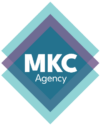If you’re in front of funnel sales, one of your key responsibilities is to quickly qualify whether or not a customer is worth putting through the sales process. This protects the whole sales team’s calendar and keeps you and the rest of your team from wasting sales cycles on those who will never buy. In the end, much of what you need to discover in a qualifying call will depend on your product or service, but if you’re in B2B technology sales, here’s a starter guide for how to run a kickass qualifying call, that won’t leave your prospects wishing they’d never clicked your calendar link.
Step 1.) Build Rapport and Show You Did Your Research
When you’ve asked someone for their valuable time, it’s essential to validate their decision to give it to you immediately. Spend the first 2-3 minutes of the call building rapport that shows you did your research on their company. You can reference something specific you saw on their or their company’s LinkedIn, mention an article or announcement from the company, or relate personal experience to their product or service. Be wary of “shallow rapport.” It’s not all that compelling that you like the same sports team. It’s far more relevant than you have played their game, used their software, or related to their content.
Before the meeting has happened, you should have started by reading through as much of their website as possible. If they have an about page, there will be valuable insight on what problems they are facing, what challenges they are trying to overcome, and how you can fit into their business. It would help if you also looked for press releases or statements made by executives or founders about new products or services.
Step 2.) Find Out Why We’re Here
There are two key why questions that need to happen on every qualifying call. Why us? And why now? There are a variety of ways to approach the questions. You can ask what brought them to your website if it’s an inbound lead or ask what about your message compelled them to take the call. Some other phrasings are:
“Is there a particular reason you chose to get in touch?”
“What about my message interested you?”
“How did you hear about us?”
“I hit you up a couple of times. What was it about my last message that hooked you? Did situations change, or did I say something compelling?”
The critical piece here is to find out why they’re considering you for this right now? What is happening in their world that prompted this meeting. It also helps guide future outreach to know what is working – jot it down and store it in a CRM or give feedback to the rest of the team.
Step 3.) Learn More About Their Business
After you’ve figured out why you’re meeting and proven you have a basic understanding of what they do, it’s time to gather more information about their business. What exactly does that mean? Be careful to make it clear you aren’t asking them to do the work for you; you want more insight into what makes them tick. Try “I’ve read about your company online and taken a peek at the website, but I’m always curious to hear first hand, how do you describe your business and the problem you solve for your customers?” Inevitably, the prospect will tell you what about their business they care about most.
Step 4.) Find Out Where They Need to Be and When
Make sure you understand where prospects need to be on their journey to see value in your product and when they can reasonably get there from where they are now. If you can’t make that assessment, then you probably don’t know what makes sense for them or where they need to be at different points in their buying process. You can uncover a lot of this by asking, “How does this (the reason for the call you got from them earlier) affect your team (or long-term strategy)?”
“Where do you need to be with this (the reason for the call) in the next 6-12 months?”
“If you could paint a picture for me of what this looks like when it’s done, what would that look like?”
“How would your day-to-day change if I could solve this for you right now?”
Please confirm that there IS a problem and get them to tell you why that matters.
Step 5.) Learn What Else They’ve Tried
Find out if this is a new issue or if they’ve already tried a few solutions that failed them. Get them to tell you what they’ve tried in the past and whether or not it worked out. If it isn’t a new problem, why is it still a problem? Are they solving for it today? Make them the narrator of their own story. You’re not trying to solve anything (yet). You’re just learning more about what you could hypothetically solve for. How long have they been dealing with this? Is it a big headache or a little one?
Step 6.) Uncover What’s Missing
So, they’re on a call with you. You’ve already covered a problem, and they clearly aren’t 100% satisfied with the solution. This is where you should be diving as deep technically as you know how to probe what’s missing from their solution.
“What do you feel is missing from your current solution?”
“How are your current initiatives and solutions working?”
“Do you have any need for X (solution you offer)?”
“If you could rank X Y & Z in order of priority, which is most important to take care of right away?”
Step 7.) Build Urgency
So, you’ve figured out there’s a problem. It’s causing them some level of discomfort, and they want to address it. But when? You can jump right to the point with a “How quickly do you plan to address this?” or ask, “Is this something for this quarter, or are you just shopping solutions?”
To be customer-centric, a question I love to ask here is “When do you think you’ll have time to address this?” or “How much time do you have to deal with this or are you looking for someone just to swoop in and save the day? Could you give us access to Y so we could get this done ASAP?”
Another option is “Is there a looming deadline for this project?”
Step 8.) Recap What You’ve Learned
“Ok, so, tell me if I’ve got this right. You’ve got <problem? and it’s causing <pain>. You’ve tried <solution> but <project> is still missing <missing pieces>. It sounds like what you really need is <perfect future state>. Did I miss anything?” Let them tell you if you’re missing any pieces of the puzzle. Then…
Step 9.) Decide Who Needs to be Involved and Setup Next Steps
Here is the critical decision. Are they qualified or aren’t they? Do they have a problem you can solve? Do they have the authority to let you solve it?
If they’re qualified go with “Good news, I think we can help. Is there anyone else we should be bringing into this decision before I outline the solution for you?”
Again, you’re going to let them tell you who should be involved if anyone.
“OK cool, any other departments this impacts we should keep updated?”
Perfect. Now, “Alright, I want to respect both of our calendars, and we’re coming up on time. Would it make sense for me to bring my SE (or AE or whatever) to another meeting on the <date> at <time>? Which emails should I send this invite to?”
You did it. You had a successful qualifying call.
Key Metrics, and Tips
Log everything in your CRM
Make sure to have an outline of what a qualified prospect looks like going in.
Record your calls and/or take notes.
Smile, relax, and have fun.
Email me if you have questions!

